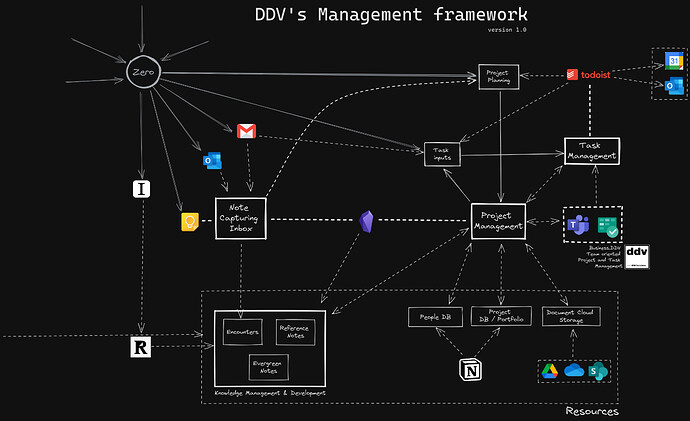Sure, its really straightforward. I’m no longer restricted to the one-line - [ ] format meaning I can put paragraphs into the task, screenshots, links, whatever is needed. (those aren’t really needed most of the time, but still)
Since each action is a note it can get tags, metadata for dataview queries, etc. Any plugin that works with notes therefore also works with my action item notes. I can even diff each action item note via git if I really wanted to, because its a note and not a random string floating around inside a note with all the various efforts to try to figure out how to manage those random strings – Obsidian is very good at managing notes, not strings inside notes, hence the friction with - [ ] management. So I just cut the Gordian knot and make each “action item” a note and it works so much better.
The power really comes with dataview because I can embed a query like this in a person or project note:
table from #action
where
file.from = this.file.link
and
!completed
and
(
date(today) > dueDate
or
dueDate <= date(today) + dur(3 days)
)
sort
And then in any action that includes the field From:: [[The Project or Person Note]] and completed:: N and has a dueDate:: within the next 3 days automatically shows up in the table it generates, and is updated dynamically whenever the action note is updated. (i.e. if I set completed:: 2021-04-27 it no longer shows up on that query)
Examples of metadata fields I use include delegatedTo:: [[Somebody]] and waitingFor:: [[Somebody]] and I have a query on each person note that rolls up all open actions where they are mentioned in either field. Etc.
Daily note has queries to identify all notes in the timeline folder with the same date, including meeting notes & significant actions I record, each as a separate note with the same date stamp. So with keyboard maestro I can press Ctrl M to create a meeting note and I just type in the title and the note is created automatically associated with the day. During the meeting I can create an action item and set From:: [[The meeting note name]] and now I have action items that came from a meeting, and the meeting note has a query that shows what action items are still open etc.
I have 2-4 queries on most notes in my project tracker. As I said very similar to @arminta in that other link.
Side note: I have a Zettelkasten that is managed completely differently from my projects, and thus they are in two separate vaults. Very different concerns, very different flows, very different in almost every respect. Separating those concerns made the above flow possible because I could tailor the vault to project management only.

